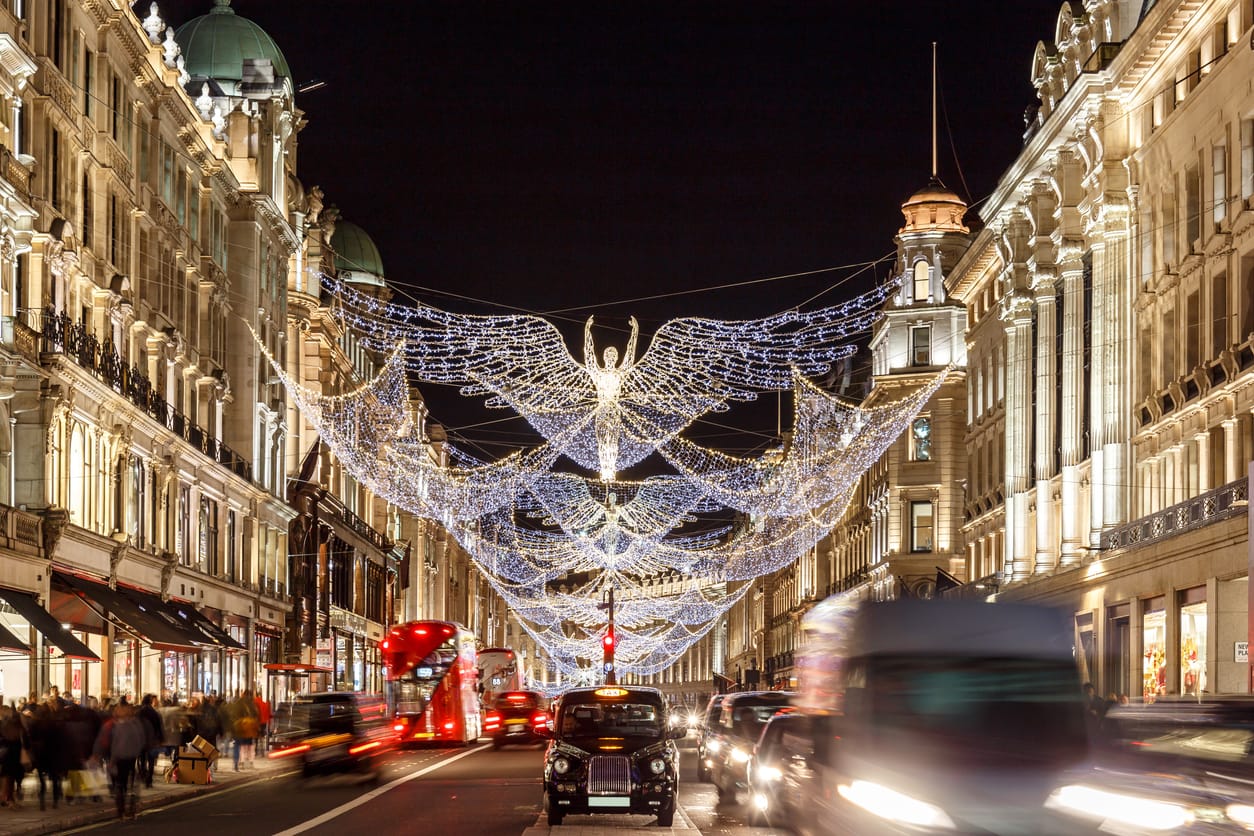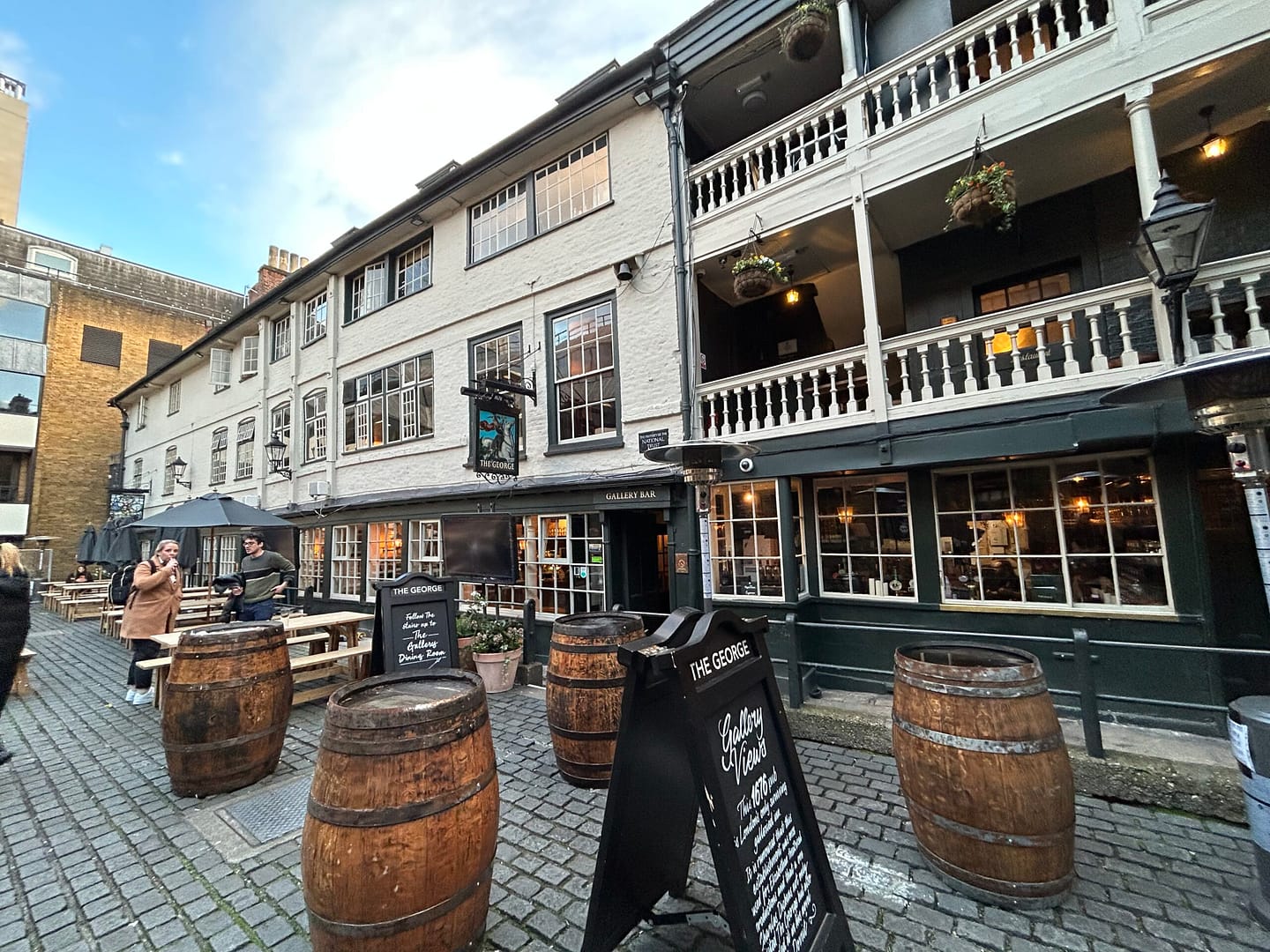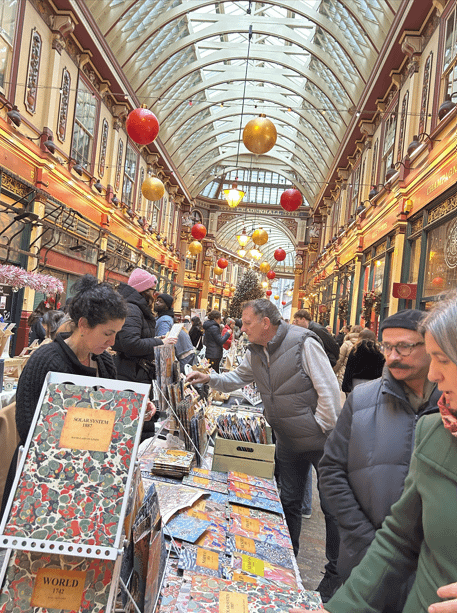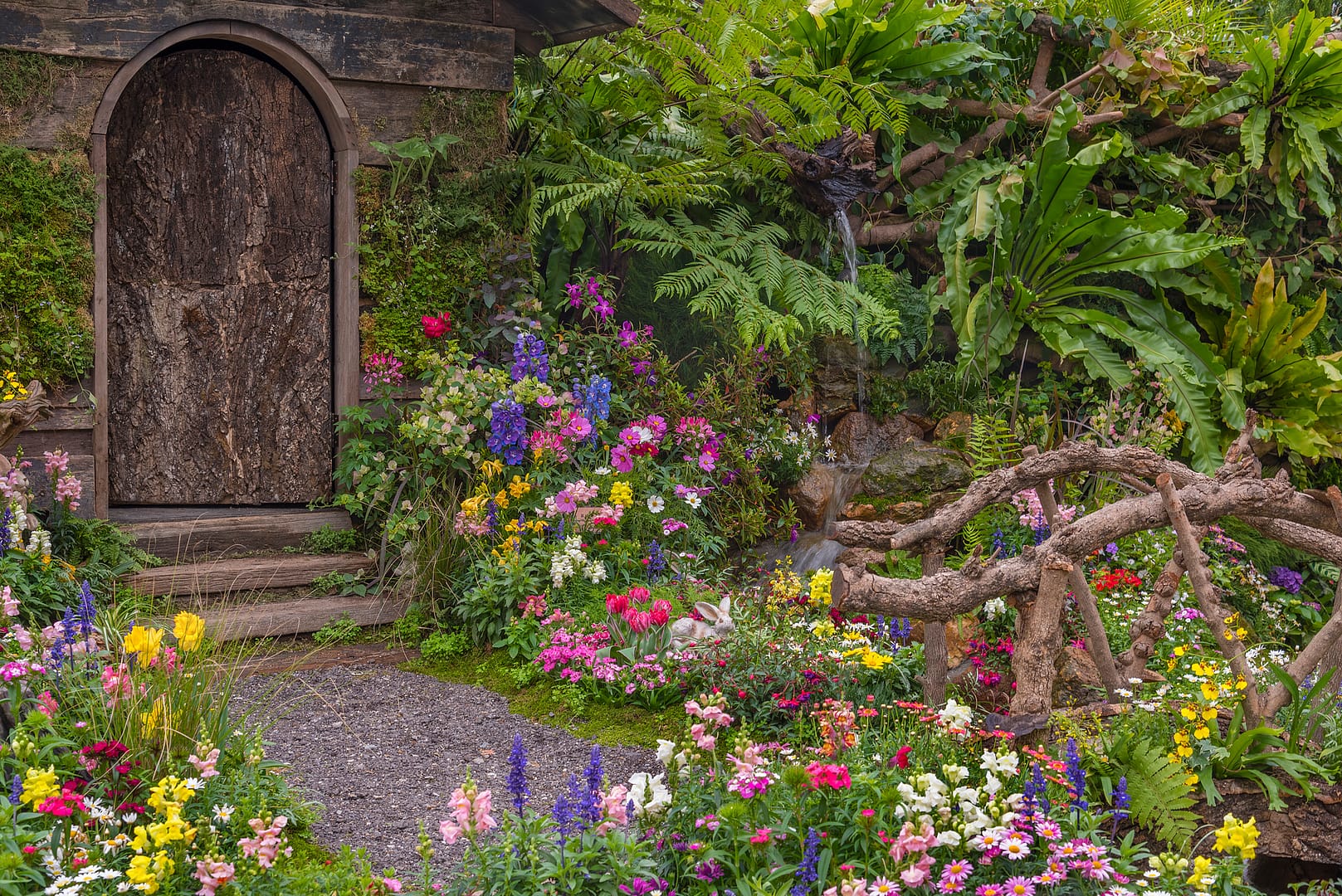Hidden Roman London: 5 Ancient Sites Beneath the City
Affiliate Disclaimer: This post contains affiliate links. I may earn a commission if you make a purchase through them, at no extra cost to you.
Discover the Hidden World of Roman London
Deep beneath London’s busy streets lies a forgotten city — Londinium, the original Roman London. Founded around AD 47, it quickly grew into a thriving port, filled with merchants, soldiers, temples, and bathhouses. Today, many of its ruins remain hidden below the skyscrapers of the City of London, waiting for curious travellers to explore.
Discovering Roman sites in London is like stepping back through two thousand years of history. You can still walk along parts of the Roman City Wall, stand where gladiators once fought in the Guildhall Roman Amphitheatre, or see the mysterious Temple of Mithras below Bloomberg’s headquarters. These incredible hidden ruins in London bring the city’s ancient past vividly to life.
The best part? Most of Roman London’s ruins are within easy walking distance, making it perfect for a half-day Roman walking tour in London. To make the most of your visit, join a guided experience such as the Roman London Walking Tour on GetYourGuide or Roman London Tour on Viator. Each stop reveals another secret layer of this fascinating city beneath the city.
Ready to explore? Here are five remarkable Roman ruins in London — from temples and amphitheatres to baths and ancient walls — where history and modern life meet in the most surprising ways.

Guildhall Roman Amphitheatre – Where Gladiators Once Fought
Hidden beneath the elegant Guildhall Art Gallery lies one of Roman London’s most extraordinary discoveries — the Guildhall Roman Amphitheatre. Once the site of thrilling gladiatorial battles and public ceremonies, this arena dates back to the 1st century AD when Londinium was the capital of Roman Britain.
The amphitheatre could hold up to 7,000 spectators. Its remains were uncovered only in 1988 during construction work — an astonishing find in the heart of the City. Today, visitors can stand inside the original stone walls, view the timber drain that once ran beneath the arena floor, and even trace its vast outline marked by a dark granite ring in Guildhall Yard above.
Entry to the amphitheatre is free with admission to the Guildhall Art Gallery, making it one of the best-value Roman ruins in London. Combine your visit with nearby landmarks like St Paul’s Cathedral and Leadenhall Market for a fascinating half-day in the city.
For a deeper experience, join a guided Roman London Walking Tour 👉 Check Roman London Tour on Viator. These tours often include expert commentary about the Guildhall Roman Amphitheatre, the Temple of Mithras, and hidden remains most travellers miss.
Travel Tip: Visit early in the day for quieter moments and excellent lighting for photos. Afterwards, enjoy lunch at the nearby Ye Olde Watling — a pub said to have roots on a former Roman road.
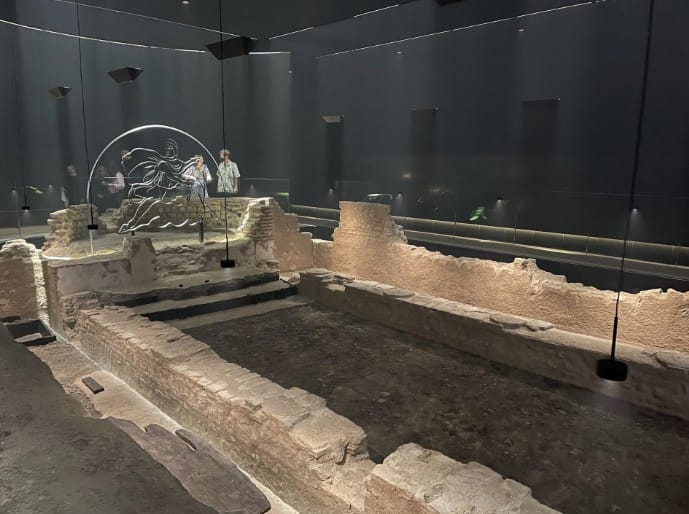
London Mithraeum – The Mysterious Temple of Mithras
Deep below Bloomberg’s sleek headquarters lies one of Roman London’s most atmospheric sites — the London Mithraeum, also known as the Temple of Mithras. This ancient shrine, dedicated to the mysterious Roman god Mithras, dates to the 3rd century AD and was rediscovered during post-war excavations in the 1950s.
The temple once stood beside the River Walbrook, a sacred stream long since hidden beneath the city. Today, visitors can step into the dimly lit ruins, where haunting sound and light projections recreate the rituals that took place here nearly two thousand years ago. The exhibition also includes more than 600 artefacts — coins, pottery, and writing tablets — offering a rare glimpse into everyday Londinium life.
Entry is free, but timed tickets must be booked in advance through the official Mithraeum website. For an even richer experience, join a Roman London walking tour 👉 Browse Roman London Tour on Viator. These small-group tours often pair the London Mithraeum with the nearby Guildhall Roman Amphitheatre and Billingsgate Roman Baths for a full immersion in ancient history.
Smart Tip: Visit early morning or late afternoon for the most atmospheric experience. Then, enjoy coffee at Blooms London Café just above the site — it’s literally built on top of a Roman temple!
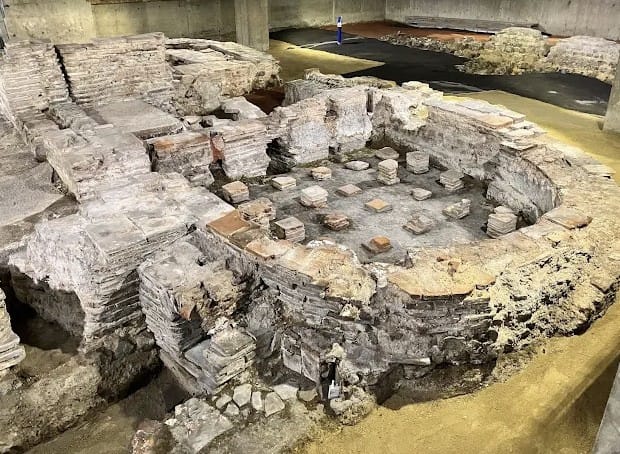
Billingsgate Roman House & Baths – Everyday Life in Ancient Londinium
Hidden beneath a modern office block on Lower Thames Street lies one of Roman London’s most remarkable secrets — the Billingsgate Roman House and Baths. These ruins reveal how wealthy citizens of Londinium once lived, relaxed, and socialised nearly 1,800 years ago.
Discovered in the 1980s, the site preserves the remains of a Roman townhouse complete with under-floor heating and a small bath complex. You can still see the mosaic floor, hypocaust system, and the outlines of hot and cold rooms — all beautifully preserved beneath the streets of the City of London.
Visits are only possible on guided tours led by qualified City of London Guides at weekends. Spaces are limited, so it’s best to reserve early through the official City of London site.
For travellers who love hidden history, this is one of the most intimate Roman sites in London. Combine it with nearby Tower Hill or Leadenhall Market for a full afternoon of discovery. If you prefer a longer route, try a Roman London walking tour 👉 Book Roman London Tour on Viator. Most tours include expert commentary on the Billingsgate Roman Baths and nearby Roman City Wall.
Travel Tip: After your tour, enjoy a riverside drink at The Horniman at Hays, where modern London meets its Roman past along the ancient Thames route.
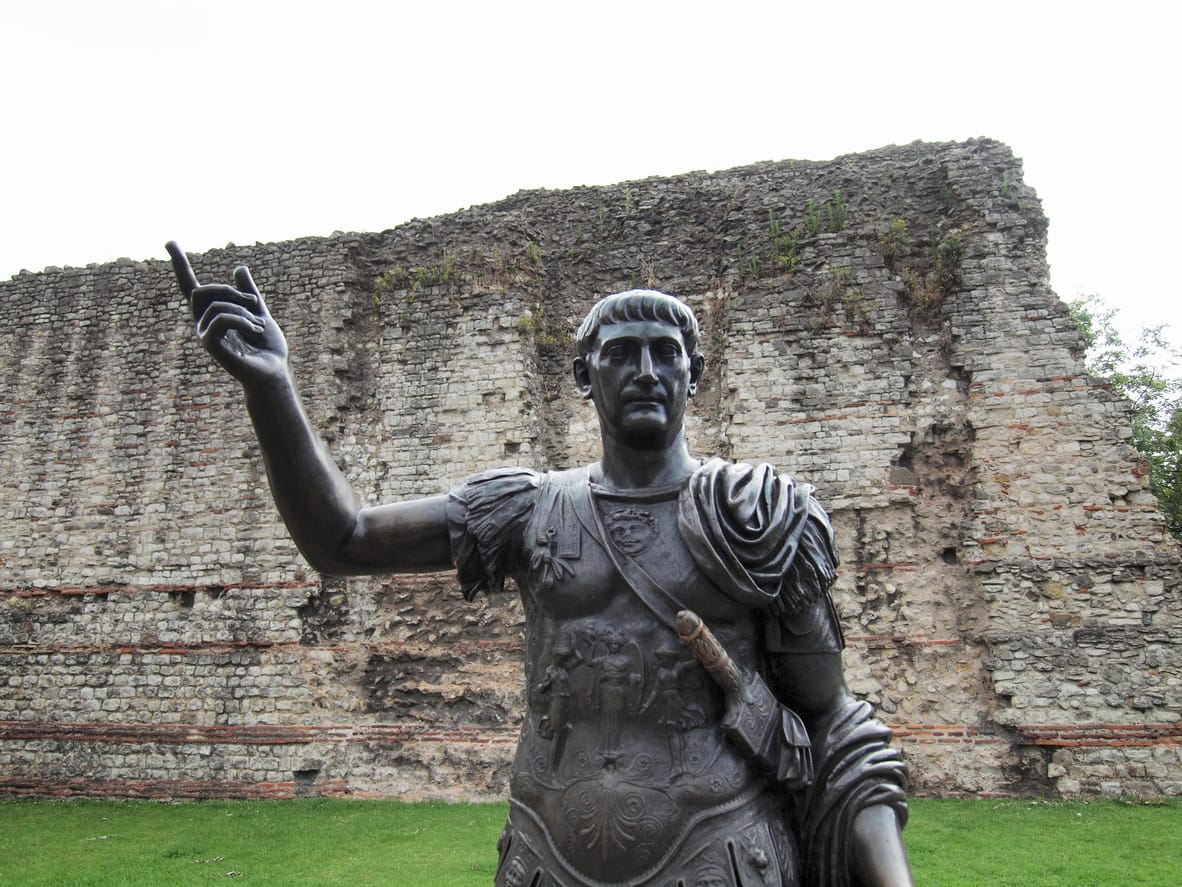
The Roman City Wall – Ancient Boundaries of Londinium
Long before London became a global capital, Londinium was a fortified Roman settlement protected by a massive stone wall. Built around AD 200, the Roman City Wall stretched for nearly two miles, enclosing what is now the City of London. Remarkably, many sections still survive — hidden between glass towers and modern offices.
The most impressive remains can be seen at Tower Hill, just north of the Tower of London. Here, you’ll find towering Roman masonry standing over four metres high, with later medieval additions still visible above it. It’s a powerful reminder of the strength and skill behind Roman engineering in London.
More fragments appear along London Wall near the Barbican and Noble Street, where the remains of the Roman Fort once stood. For the best self-guided route, follow the London Wall Walk, a signed path connecting the city’s major Roman ruins.
For an effortless experience, join a guided Roman London tour 👉 View options on City London Guides or Roman History Tour on Viator. Expert guides explain how the Roman City Wall shaped London’s early growth and show hidden remains tucked inside courtyards and car parks.
Travel Tip: Start your walk at Tower Hill Underground Station and end near the Museum of London. There you’ll find fascinating artefacts and scale models of Roman London, included in the Go City London Pass 👉 Check prices.

Roman Fort at Noble Street – Soldiers’ Stronghold of Londinium
Tucked behind the modern glass buildings of the Barbican lies one of Roman London’s oldest military sites — the Roman Fort at Noble Street. Built around AD 120, this fortress once housed up to 1,000 soldiers who protected Londinium, the bustling capital of Roman Britain.
Although most of the fort is now buried beneath offices and roads, several sections of its mighty walls remain visible along Noble Street and London Wall. The best-preserved stretch includes original Roman stonework over two metres thick, giving a real sense of the scale and strength of this ancient outpost.
You can visit the site freely year-round, but to uncover its deeper stories, consider joining a guided Roman London Walking Tour 👉 Find Roman London Tour on Viator. Many tours include stops at the Roman Fort, City Wall, and Guildhall Amphitheatre, blending archaeology, architecture, and everyday life in Londinium.
Smart Tip: Pair your visit with the nearby Museum of London, which displays artefacts from the fort, including Roman armour and tools. Museum entry is free with the Go City London Pass 👉 Check details, making it an easy way to extend your Roman adventure indoors.
Standing here, surrounded by concrete towers, it’s easy to forget that London’s skyline began with these ancient stone defences — the first walls of a city that never stopped growing.

The Roman Basilica Beneath Gracechurch Street – London’s Newest Discovery
Even after two thousand years, Roman London continues to surprise us. In 2025, archaeologists uncovered the remains of what is believed to be London’s first Roman basilica beneath a redevelopment site at 85 Gracechurch Street, near Leadenhall Market.
Dating back to around AD 78–84, this basilica would have been the centre of civic and commercial life in Londinium — a grand hall where traders, officials, and citizens met for business, politics, and worship. The discovery included well-preserved mosaic fragments, painted plaster, and evidence of monumental stone columns, offering new insight into the early days of Roman rule in Britain.
Although the site isn’t yet open to the public, developers plan to showcase parts of the structure in a new underground exhibition. It’s an exciting reminder that hidden Roman ruins in London are still being unearthed beneath everyday offices and shops.
While you can’t visit this basilica just yet, you can see similar architecture and artefacts on a Roman London walking tour 👉 Browse Roman London Tour on Viator. Guides often share the latest archaeological updates and show nearby ruins from the same period.
Travel Tip: Stop by Leadenhall Market afterwards — it sits directly above ancient Londinium and was once home to Roman traders, much like the basilica below.

Suggested Walking Route – A Day in Roman London
Exploring Roman London on foot is the best way to feel the city’s ancient heartbeat. Most of the major Roman ruins in London sit within a small area of the City, so you can easily visit them all in one rewarding day.
Morning:
Start at the Guildhall Roman Amphitheatre, where gladiators once fought before cheering crowds. Then head south toward Walbrook to see the atmospheric London Mithraeum. Take your time inside the temple — the light show and ancient artefacts make it unforgettable.
Lunch Break:
Stop for lunch near Leadenhall Market, one of London’s oldest trading sites. The market sits above the remains of Londinium’s Roman forum and basilica. Enjoy a leisurely meal at Chamberlain’s or The Lamb Tavern, both set within the market’s ornate arcade.
Afternoon:
After lunch, walk toward the riverside to visit the Billingsgate Roman House and Baths on Lower Thames Street, then continue east to Tower Hill to explore the dramatic remains of the Roman City Wall. Finish your journey at the Roman Fort at Noble Street near the Barbican, where the story of Londinium’s defences comes full circle.
🗺️ Need help planning your route? Download a self-guided Roman London Map or join an expert-led tour 👉 City of London Roman London Walking Tour or Roman History Tour on Viator.
Smart Tip: If you hold a Go City London Pass 👉 Check prices here, you’ll get access to the Guildhall Art Gallery and Museum of London — both perfect for context and air-conditioned breaks between sites.
Planning Your Roman London Adventure
Exploring Roman London is one of the most rewarding ways to uncover the city’s oldest stories. Beneath modern glass towers and office blocks lie traces of gladiators, temples, and bathhouses — all reminders of how Londinium once thrived as Rome’s gateway to Britain.
Most Roman sites in London are free or inexpensive to visit, and many are close together, making it easy to explore them all in one day. Guided tours offer fascinating insight into how the ancient city evolved. For the best experience, book a Roman London Walking Tour 👉 Find options on City of London Guides or Roman History Tour on Viator. These expert-led walks bring history to life and often include hidden ruins you’d never find alone.
If you prefer flexibility, the Go City London Pass 👉 Check current prices includes entry to museums and attractions located near many Roman sites — perfect for mixing ancient history with modern highlights.
📝 Smart Tip: Wear comfortable shoes and plan your route using our recommended stops — from the Guildhall Roman Amphitheatre to the Roman City Wall and Noble Street Fort. Start early to enjoy quieter moments and better photo light.
Curious about more historic adventures?
👉 Subscribe to our weekly newsletter for insider itineraries and day-trip ideas.
👣 Join our London Adventures Club on Facebook for travel tips, local stories, and hidden gems from across the city.
Because in London, even the pavements have two thousand years of history waiting beneath your feet.
Other Useful Links for your visit in London
Accommodation
London Transport
Car Hire & Transfers
- GetTransfer – Private transfers from airports and city hotels
- GetRentaCar – Find the best rates for your UK road trip
Top Attractions & Tours
- GetYourGuide – UK tours and attraction tickets
- Big Bus Tours – London Hop-On Hop-Off
- Tiqets – Tickets for Tours & Events
Luggage Storage & Travel Protection
- Airhelp – Claim compensation for flight delays
- RadicalStorage – Store bags securely while exploring
- Compensair – Flight disruption compensation
Related Blogs
- How to Spend 3 Days in London
- Where to Stay in London
- Best London Museums
- Best London Markets
- Best Sunday Roast in London
Don’t miss out! Join our club or subscribe to our newsletter
- Best London Travel Tips, Hidden Gems, Events and Promotions on Facebook: London Adventures Club
- Get our FREE London Transport Guide and our Newsletter for the latest travel tips and hidden gems: Subscribe
- Check out our guided walking tours: London Adventures Walking Tours
Have questions on planning your trip to London, please Contact us.
I work with affiliate partners, which means I may earn a small commission if you make a purchase through links in this post—at no extra cost to you. The services and products I recommend are ones I personally stand by and would use (or have used) myself.

